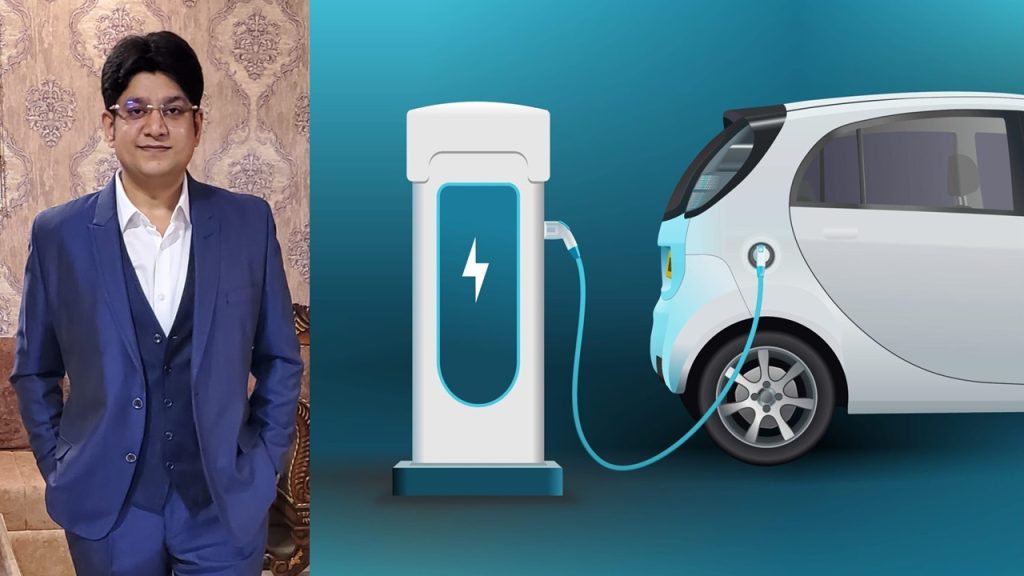The global push towards sustainable and environmentally friendly transportation has given rise to an increased emphasis on electric vehicles (EVs). As the automotive industry undergoes a transformative shift, governments worldwide are actively implementing policies to incentivise the adoption of electric vehicles. Recent reports claim that EV registrations in India have surged from 1.25 lakh units in 2020 to 10.25 lakh in 2023.
However, one critical aspect of this transition is the delicate balance between making EVs affordable for consumers and addressing the fiscal responsibilities of governments. And this article will explore and share insights on the intricacies of consumer incentives, budgetary considerations, and the role of governments in driving electric vehicle adoption.
Also read: Top 7 Upcoming Electric SUVs To Launch In India Soon: Maruti Suzuki, Tata, Kia
Government Initiatives
The role of the government in promoting EVs is exemplified by initiatives like the Faster Adoption and Manufacturing of (Hybrid and) Electric Vehicles (FAME) scheme in India. However, as budgetary constraints persist, adjustments are made to consumer incentives.
For instance, under FAME India Scheme Phase-II, the government has reduced the EV subsidy per unit for electric two-wheelers (e-2Ws) from 40% to 15% of the ex-factory price. This shift reflects the intricate balance governments strive to maintain between encouraging sustainable practices and managing fiscal responsibilities.
FAME, specifically FAME-II, stands as India’s flagship scheme for promoting electric mobility. Implemented for three years with a budget allocation of 10,000 Crores, FAME-II aims to accelerate the adoption of electric vehicles. While the reduction in subsidy for e-2Ws might raise concerns, it is essential to view this decision in the broader context of ensuring the sustainability of incentive programs over the long term.
However, understanding consumer motivations is crucial to comprehend the impact of incentives on EV adoption. A recent study claims that some of the top reasons people choose EVs include lower fuel costs, a superior driving experience, reduced maintenance compared to internal combustion engine (ICE) cars, and the potential to use the vehicle as a power source. These factors underscore the importance of aligning incentives with consumer needs and preferences.
Key Measure to Boost EV Adoption
To make electric vehicles more accessible to consumers, the government has employed various financial incentives. These incentives can be broadly categorized into different mechanisms:
Road Tax and Registration Fee Exemptions: Waiving road tax and one-time registration fees at the time of purchase reduces the overall cost of ownership.
Purchase Incentives: Direct discounts provided to users on the cost of the electric vehicle make the initial purchase more attractive.
Interest Subventions: Discounts on interest rates while availing loans ease the financial burden on consumers, making EVs more financially viable.
Scrapping Incentives: Encouraging the de-registration of old petrol and diesel vehicles by providing incentives helps transition the automotive landscape.
Income Tax Benefits: Providing deductions on the tax amount payable by individuals further enhances the financial appeal of electric vehicles.
Coupons: Financial incentives where the amount is reimbursed later provide flexibility and encourage long-term commitment to EVs.
Budgetary Considerations and Fiscal Responsibility
The government faces a delicate balancing act when allocating funds for EV incentives. On one hand, they need to provide enough incentives to make EVs attractive to a wide range of consumers, fostering mass adoption.
On the other hand, they must manage fiscal responsibilities, ensuring that the incentives do not strain the overall budget. The reduction in subsidies for e-2Ws under FAME-II exemplifies this balancing act, indicating a need for sustainable and scalable incentive structures.
Impact on EV Industry and Adoption Rates
The economics of electric vehicle affordability is directly linked to industry dynamics and adoption rates. Consumer incentives play a pivotal role in influencing purchasing decisions, creating a ripple effect throughout the automotive sector.
As incentives make EVs more accessible, manufacturers experience increased demand, leading to economies of scale and further cost reductions. This cycle contributes to a self-sustaining ecosystem where affordability, demand, and production efficiency reinforce each other.
In short, consumer incentives, ranging from direct discounts to tax benefits, form the bedrock of efforts to accelerate the adoption of electric vehicles. While adjustments in subsidies may raise concerns, they are often part of a broader strategy to ensure the long-term sustainability of incentive programs.
As governments globally navigate the delicate balance between encouraging sustainable practices and managing fiscal responsibilities, the future of electric vehicle affordability holds the promise of a greener and economically viable automotive landscape.
This article is authored by Manish Chugh, Co-founder & Director of Aponyx Electric Vehicles. All views are personal.

